INDIAN ARMED FORCES CHIEFS ON
OUR RELENTLESS AND FOCUSED PUBLISHING EFFORTS

SP Guide Publications puts forth a well compiled articulation of issues, pursuits and accomplishments of the Indian Army, over the years

I am confident that SP Guide Publications would continue to inform, inspire and influence.

My compliments to SP Guide Publications for informative and credible reportage on contemporary aerospace issues over the past six decades.
ISRO lights up the sky
Lifting off the first of its 19 missions planned for this year, ISRO successfully placed three satellites into orbit.
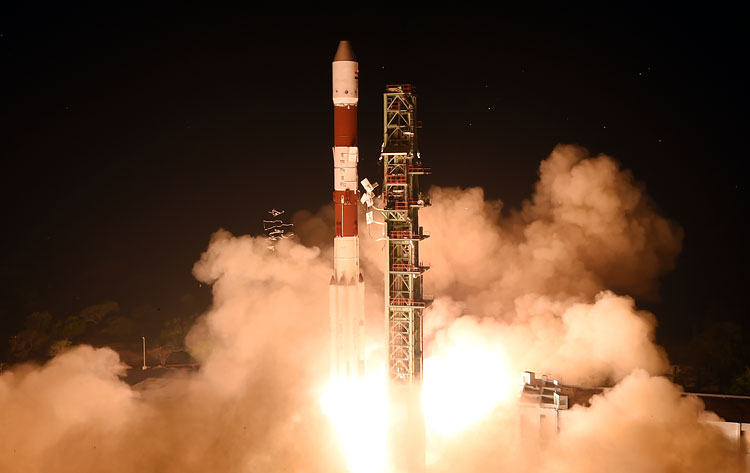
During the wee hours of February 14, 2022, India’s space agency launched its maiden mission of this year. The space agency, Indian Space Research Organisation (ISRO)’s Polar Satellite Launch Vehicle (PSLV) lifted off at 0559 hours IST from the first launch pad at SHAR. The PSLV-C52 injected Earth Observation Satellite EOS-04, into an intended sun synchronous polar orbit of 529 km altitude at 6:17 hours IST from Satish Dhawan Space Centre (SDSC), SHAR, Sriharikota, ISRO informed.
After the successful completion of each of the four stages and the separation of the three satellites, ISRO’s mission control room was filled with the cheering sound of the applause. This was the 80th launch vehicle mission from SDSC SHAR, Sriharikota; 54th flight of PSLV; and the 23rd flight of PSLV in XL configuration (6 strap-on motors). This was also the first of the 19 missions including eight launch vehicle missions, seven spacecraft missions and four technology demonstrator missions planned by ISRO for 2022. This was also the first mission under ISRO’s new Chairman, S. Somanath.
Congratulations to our space scientists on the successful launch of PSLV C52 mission. EOS-04 satellite will provide high resolution images under all weather conditions for agriculture, forestry and plantations, soil moisture and hydrology as well as flood mapping.
— Narendra Modi (@narendramodi) February 14, 2022
An important day of scientific achievements for the nation - Congratulations to @isro for the successful launch of PSLV-C52 which placed Earth Observation Satellite EOS-04 & two other satellites in their orbits.
— DRDO (@DRDO_India) February 14, 2022
"The primary satellite EOS-4 has been put in a very precise orbit by the PSLV C52, and along with that the co-passenger satellites INS-2TD and INSPIRESat-2D have been placed in the right orbit. Congratulations to everybody who worked for this mission. This spacecraft is going to be one of the biggest assets for us to serve the country and ISRO will be back with the next launch of PSLV very soon,” Somanath said after the launch.
The Satellite trio
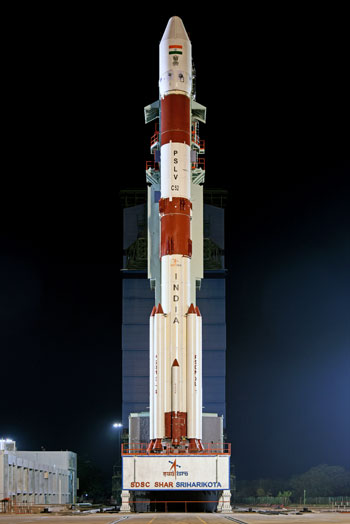
Having a mission life of 10 years, the main satellite of the mission was the EOS-04 that was realised at U R Rao Satellite Centre, Bengaluru. Weighing about 1710 kg and generating 2280 W power, it is a Radar Imaging Satellite designed to provide high quality images under all weather conditions for applications such as agriculture, forestry &plantations, soil moisture &hydrology and flood mapping. EOS-04 was placed into an intended sun synchronous polar orbit on Monday morning, Indian time.
This was the 80th launch vehicle mission from SDSC SHAR, Sriharikota; 54th flight of PSLV; 23rd flight of PSLV in XL configuration (6 strap-on motors) and the first one under ISRO’s new Chairman, S. Somanath.
Apart from the EOS-04, the vehicle also placed two small satellites, INSPIRESat-1 and INS-2TD. The co-passenger satellites also successfully separated from the PSLV in a predetermined sequence.
After separation, the two solar arrays of EOS-04 deployed automatically and ISRO Telemetry Tracking and Command Network (ISTRAC) at Bangalore assumed the control of the satellite. In the coming days the satellite will be brought to its final operational configuration following which it will begin providing the data.
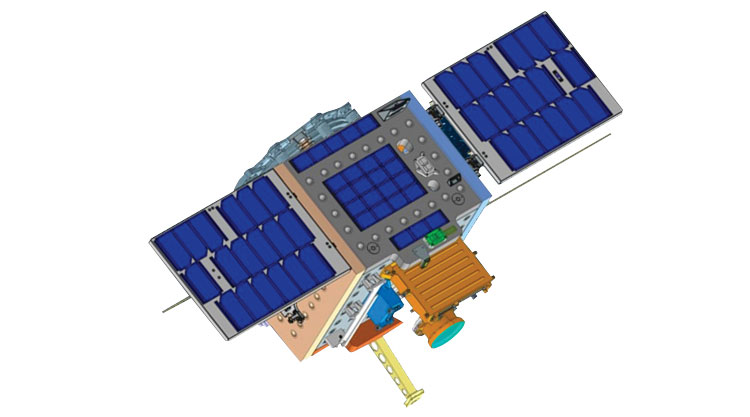
INSPIRESat-1 is a student satellite developed by Indian Institute of Space Science & Technology (IIST) in association with Laboratory of Atmospheric & Space Physics at University of Colorado, Boulder, USA. Other contributors are NTU, Singapore and NCU, Taiwan. Two scientific payloads improve the understanding of ionosphere dynamics and sun's coronal heating processes.
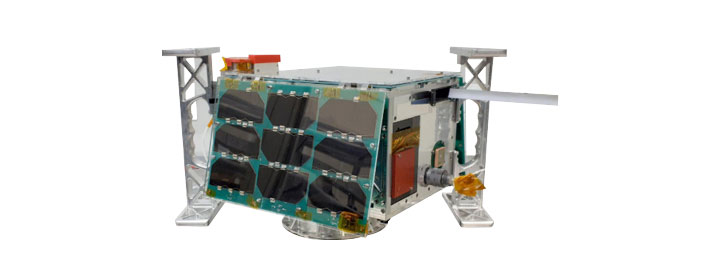
INS-2TD is a technology demonstrator satellite from ISRO, which is a precursor to India-Bhutan Joint Satellite (INS-2B). Having a thermal imaging camera at its payload, the satellite benefits the assessment of land surface temperature; water surface temperature of wetlands/lakes; delineation of vegetation (crops and forest); and thermal inertia (day/night).
SALIENT FEATURES
| Satellite | Mass(kg) | Power(W) | Mission life |
|---|---|---|---|
| EOS-04 | 1710 | 2280 | 10 years |
| INS-2TD | 17.5 | 42 | 6 months |
| INSPIRESat-1 | 8.1 | 30 | 1 year |
“After a smooth countdown of 25 hours 30 minutes the PSLV- C52 launch vehicle lifted off at 0559 hrs (IST) in the opening of the launch window. The important flight events, namely, stage & strap-on ignitions, heat shield separation, stages & strap-on separation, satellite injection took place exactly as planned,” stated ISRO. The agency also added that after a flight of about 17 minutes 34 seconds three satellites were injected successfully into a sun-synchronous polar orbit of 529 km. The orbit achieved for the satellites is very close to the intended orbits.”
EOS-04 is a Radar Imaging Satellite designed to provide high quality images under all weather conditions for applications such as agriculture, forestry & plantations, soil moisture & hydrology and flood mapping.
With participation from Bhutan, Singapore, Taiwan, USA, this was indeed an example of a collaborative effort. ISRO had signed many MoU’s and held important talks towards such collaborations. Even the government, through its reforms, had urged to have global participation especially across universities.
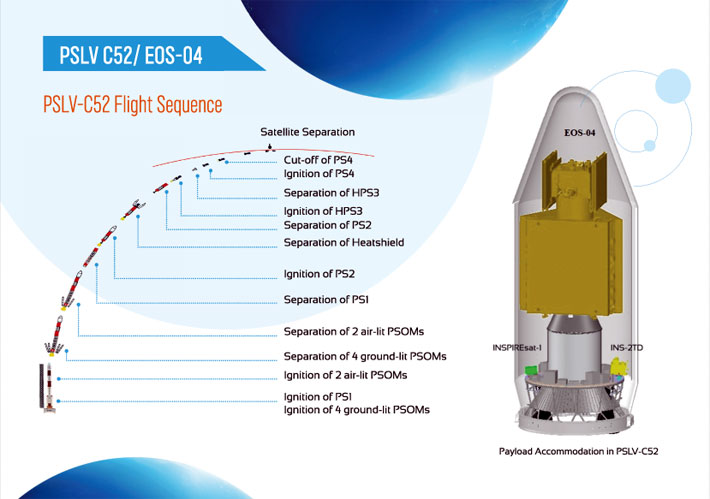
The PSLV is the third generation launch vehicle of India. It is the first Indian launch vehicle to be equipped with liquid stages. After its first successful launch in October 1994, PSLV has been called the reliable and versatile workhorse launch vehicle of India with 39 consecutively successful missions by June 2017. Besides, the vehicle successfully launched two spacecraft – Chandrayaan-1 in 2008 and Mars Orbiter Spacecraft in 2013 – that later traveled to Moon and Mars respectively.
INSPIRESat-1 is a student satellite developed by Indian Institute of Space Science & Technology (IIST) in association with Laboratory of Atmospheric & Space Physics at University of Colorado, Boulder, USA. Other contributors are NTU, Singapore and NCU, Taiwan.
Last year, during the same month, the PSLV had lifted-off for another important launch. The PSLV-C51 successfully launched Amazonia-1 and 18 co-passenger satellites from Sriharikota on February 28, 2021.
Amazonia-1 was the optical earth observation satellite of National Institute for Space Research (INPE), Brazil. This satellite isalso providing remote sensing data for monitoring deforestation in the Amazon region and analysis of diversified agriculture across the Brazilian territory.
INS-2TD is a technology demonstrator satellite from ISRO, which is a precursor to India-Bhutan Joint Satellite (INS-2B).
PSLV-C51/Amazonia-1 was the first dedicated commercial mission of NewSpace India Limited (NSIL), a Government of India company under Department of Space. The 18 co-passenger satellites onboard PSLV-C51 included four from IN-SPACe and fourteen from NSIL. Out of 4 satellites from IN-SPACe, three were UNITYsats designed and built as a joint development by Jeppiaar Institute of Technology, Sriperumbudur (JITsat), G.H.Raisoni College of Engineering, Nagpur (GHRCEsat) and Sri Shakti Institute of Engineering and Technology, Coimbatore (Sri Shakthi Sat) and one was Satish Dhawan Sat (SDSAT) from Space Kidz India (SKI). The fourteen satellites from NSIL carried were the commercial satellites from India (1) and USA (13).
PSLV had also successfully launched EOS – 01 in 2020 along with nine customer satellite from Sriharikota. The nine customer satellites from Lithuania (1), Luxembourg (4) and USA (4) were launched under a commercial arrangement with NSIL.
ISRO's previous launch in this series, EOS-03 launched on a Geosynchronous Satellite Launch Vehicle (GSLV) rocket, suffered a tragic failure during liftoff in August 2021. ISRO later said the cause was "a failure to ignite the cryogenic stage of the launch vehicle." However, the current launch after that mission progressed without any hitch or glitch.
With the moon mission Chandrayaan-3; human spaceflight mission, Gaganyaan’s unscrewed flight; sun mission Aditya- L1; satellite launches including EOS-06; and several other science missions in the pipeline, this year holds promises of being an exciting one for the Indian space industry.





